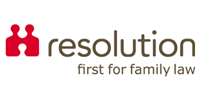Speak to a specialist solicitor at our law firm in North Yorkshire.
A full repairing and insuring (FRI) lease is one that places the responsibility of repair and maintenance of the premises onto the tenant. The tenant may undertake them directly or they may contribute to their cost by way of a service charge. The tenant must also contribute to the cost of the building insurance. The clear advantage of this type of lease to the landlord is that all likely costs in relation to their building are met by the tenant/s, thus preserving the value of the property as an investment. As such, it is not uncommon for landlords to assert that such leases are non-negotiable.
I am a tenant – what are the risks and how can I mitigate them?
This type of lease is common where the term is for5 years or more and can apply to all types of premises. Given that commercial tenants are afforded fewer protections than the residential tenant insofar as the general condition of the property is concerned, a tenant entering into an FRI lease should assure itself of the internal and external condition of the building, which may mean obtaining a survey of the property. This will help to avoid unexpected and unwanted liability for repairs.
You are only responsible for the extent of the property demised to you. For example, if the building is stand-alone, you would likely be responsible for repair and maintenance for the whole of the building (i.e. structure of the building, in addition to the internal parts). Whereas if the building is part of an estate or a multi-let building, you would not be responsible for the repair and maintenance of the shared parts, for which the landlord retains responsibility. It is the service charge which recoups costs for such repairs by the landlord.
As a tenant, you are still in a position to negotiate the terms of an FRI lease to increase your rights and reduce your potential liability. This power should be exercised before entering into the lease, as any concerns you have can be addressed during the negotiations stage and subsequently, through the careful drafting of the lease. Further comfort can be found in a Schedule of Condition, a document which essentially evidences the state of repair of premises at the outset of the lease and limits the tenant’s liability for repair to that standard, not a higher standard.
You should be aware that an FRI lease may not be appropriate in all circumstances; it is very much dependent on the nature and condition of the premises, the term of the lease and the respective bargaining position of the parties to it. If an FRI lease is not appropriate, there are still ways to alleviate the tenant’s repairing obligation and create a balance of obligation between both parties. You should seek legal advice as to the implications and alternatives available.
Should issues arise with the cost of repairs, it can prove problematic where the tenant wishes to transfer its lease or exercise a break clause.
I’m a landlord – what are my obligations and how can I contract out of liability?
To avoid the implication that a landlord is liable for any repairs, a well-drafted FRI lease should make it clear that responsibility for all repairs falls on the tenant, irrespective of the extent, nature or origin of the damage. It is also important to carefully consider all other clauses to ensure that all repairing obligations are unequivocally transferred from landlord to tenant.
Whilst liability for the costs of repair and insurance are borne by the tenant, it is still the landlords responsibility to take out an insurance policy. The landlord remains responsible for the parts of the property not let to the tenant and therefore, it is essential that the definition/extent of the property demised to the tenant is accurate in the lease.
To discuss any of this or other questions you have about your commercial property lease, please contact a member of the Commercial Property team at Crombie Wilkinson Solicitors.


















